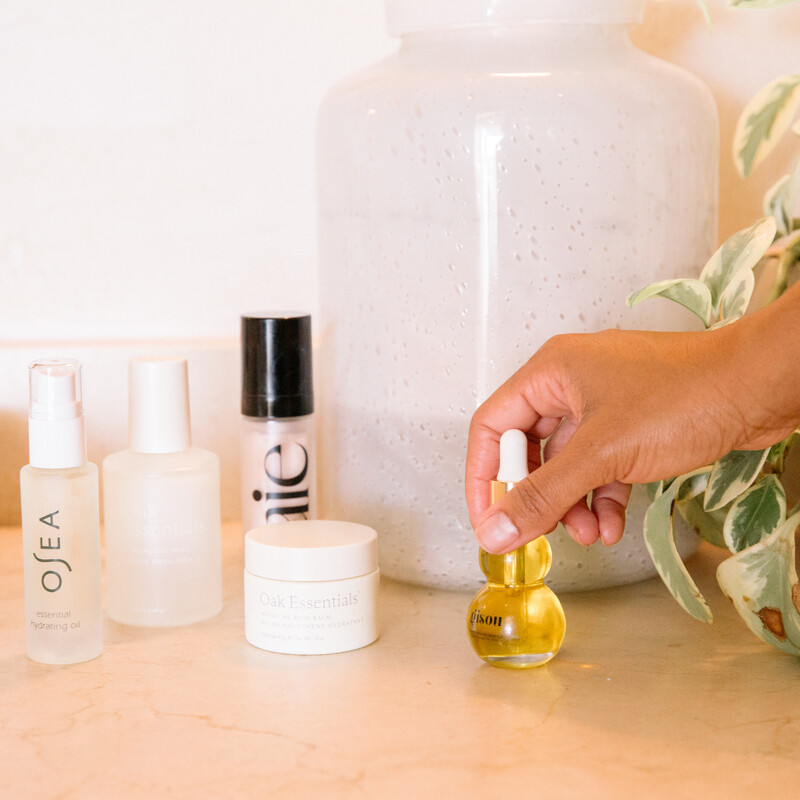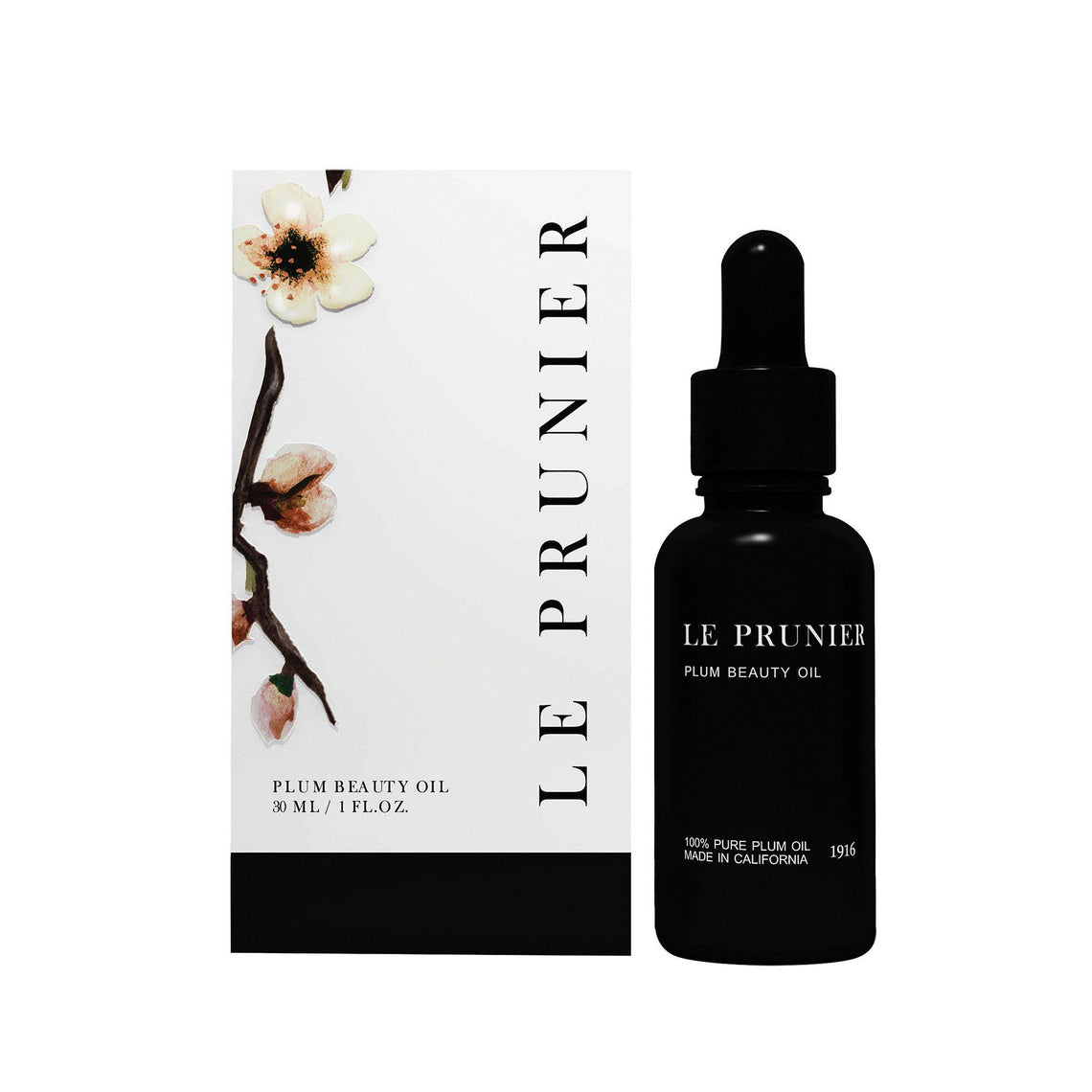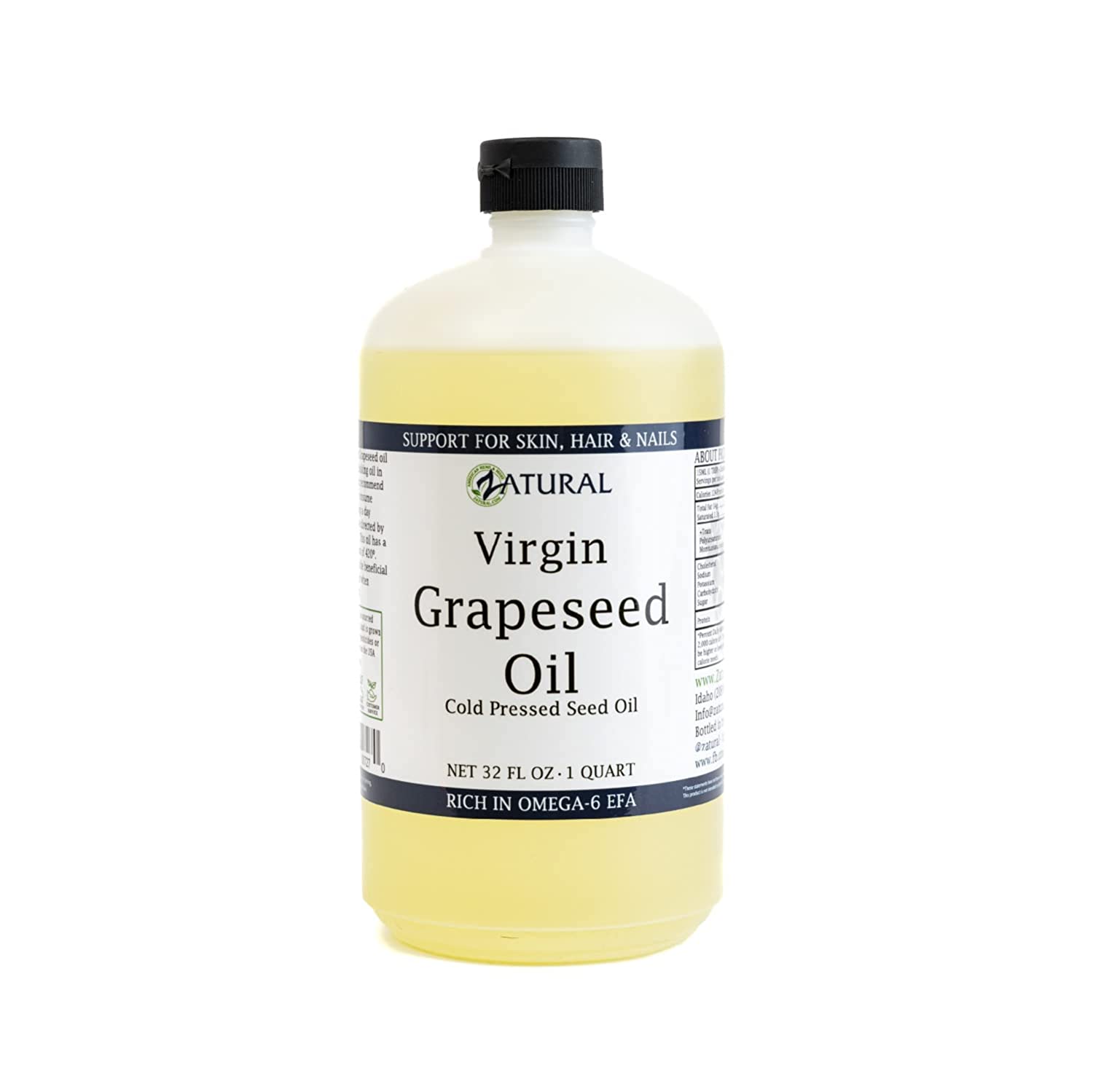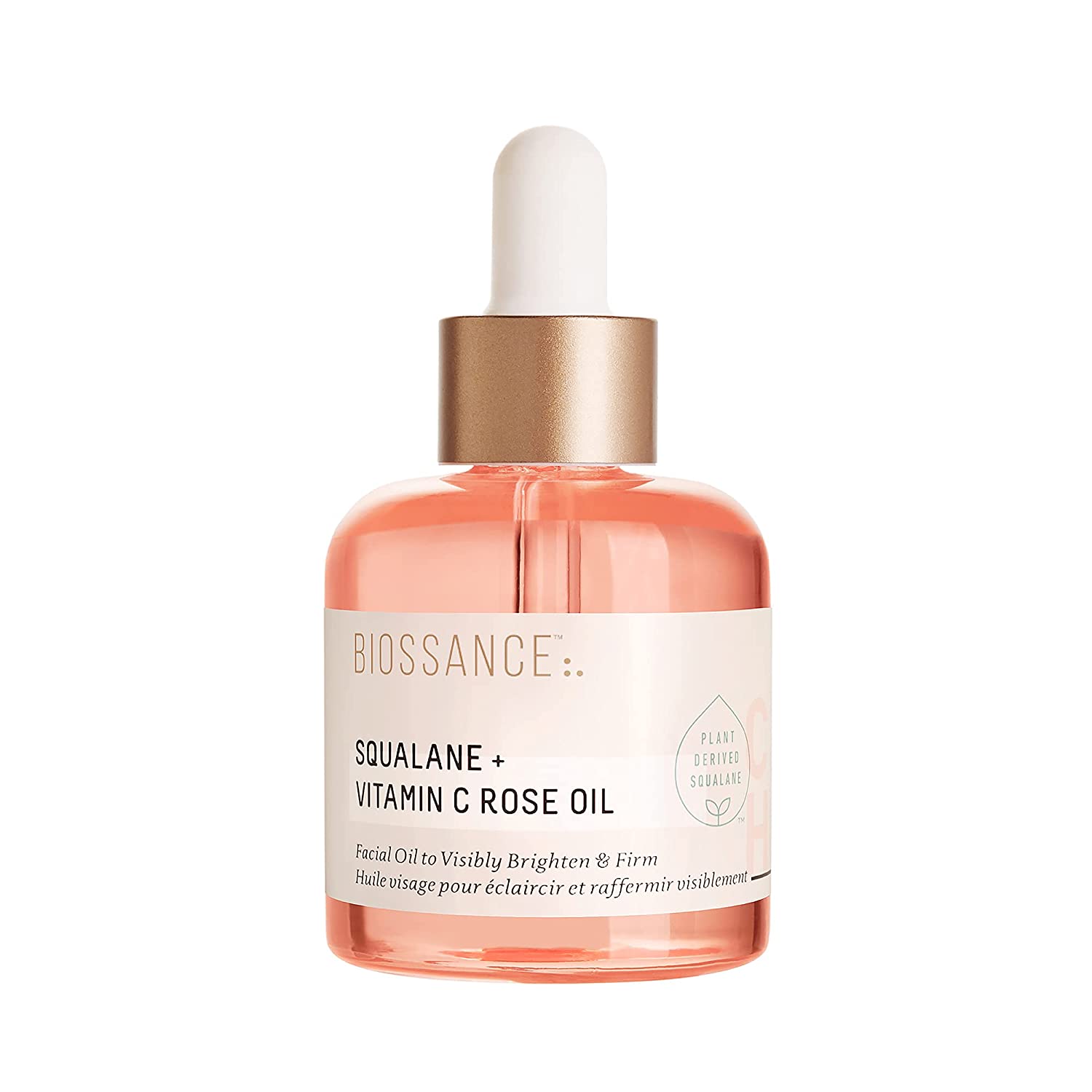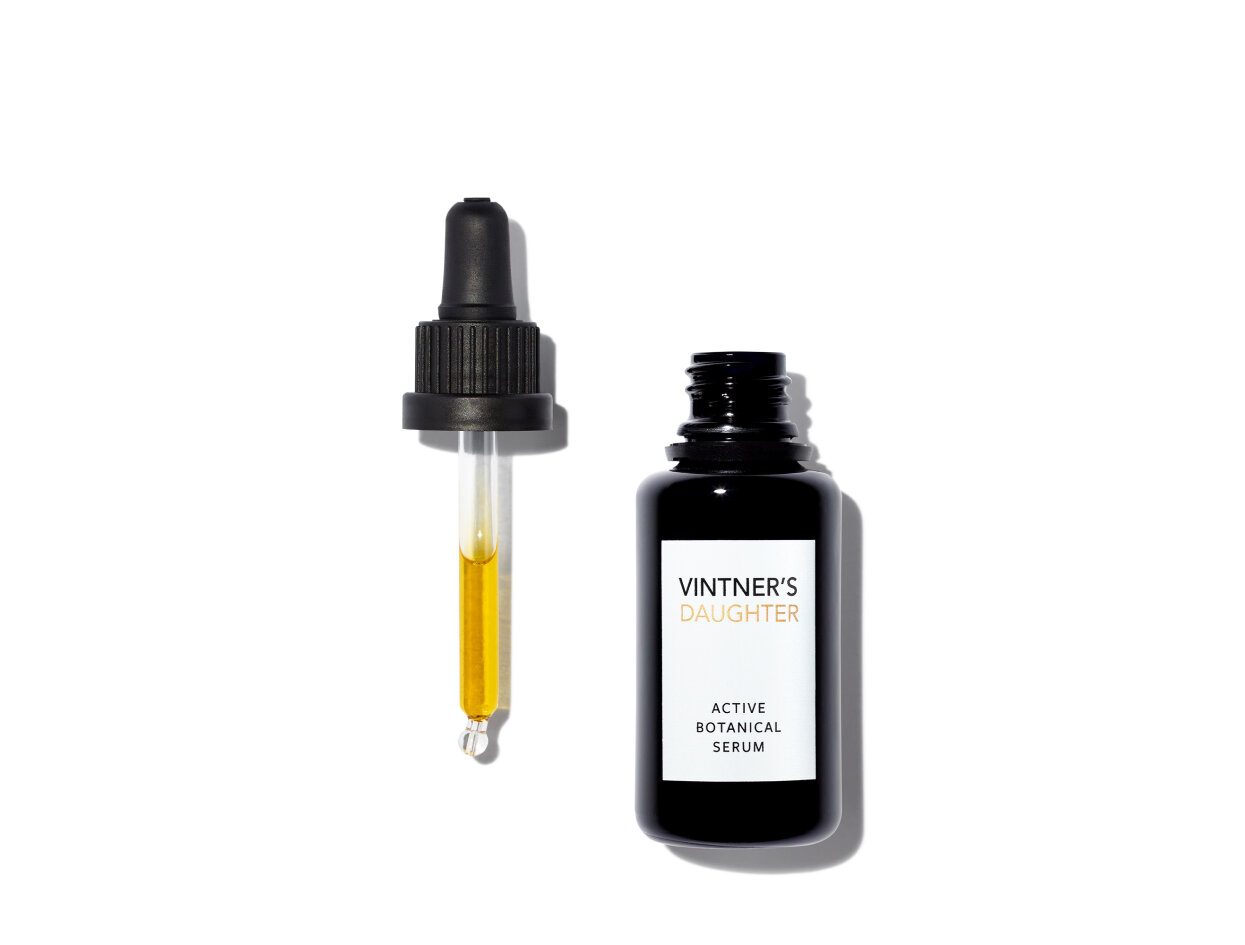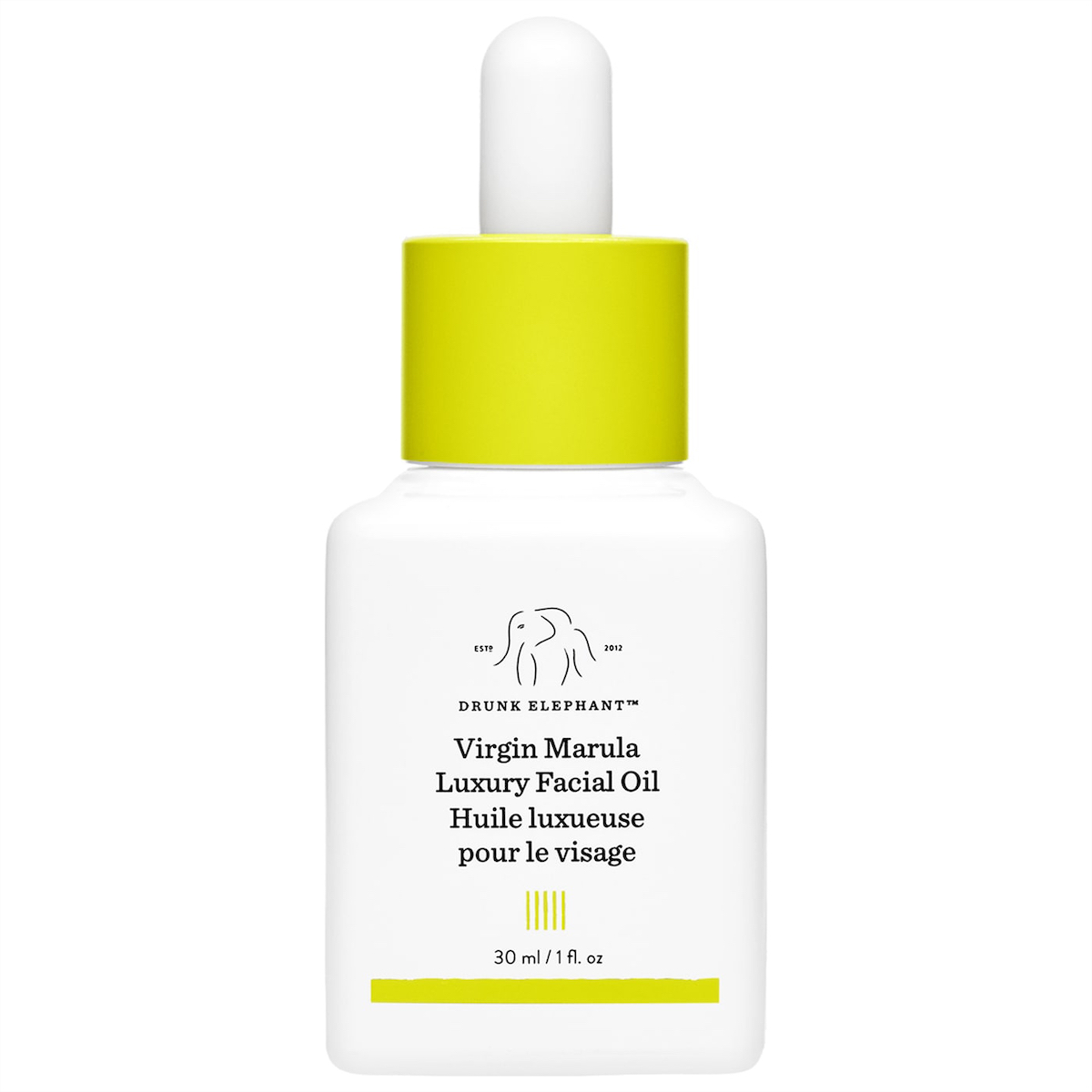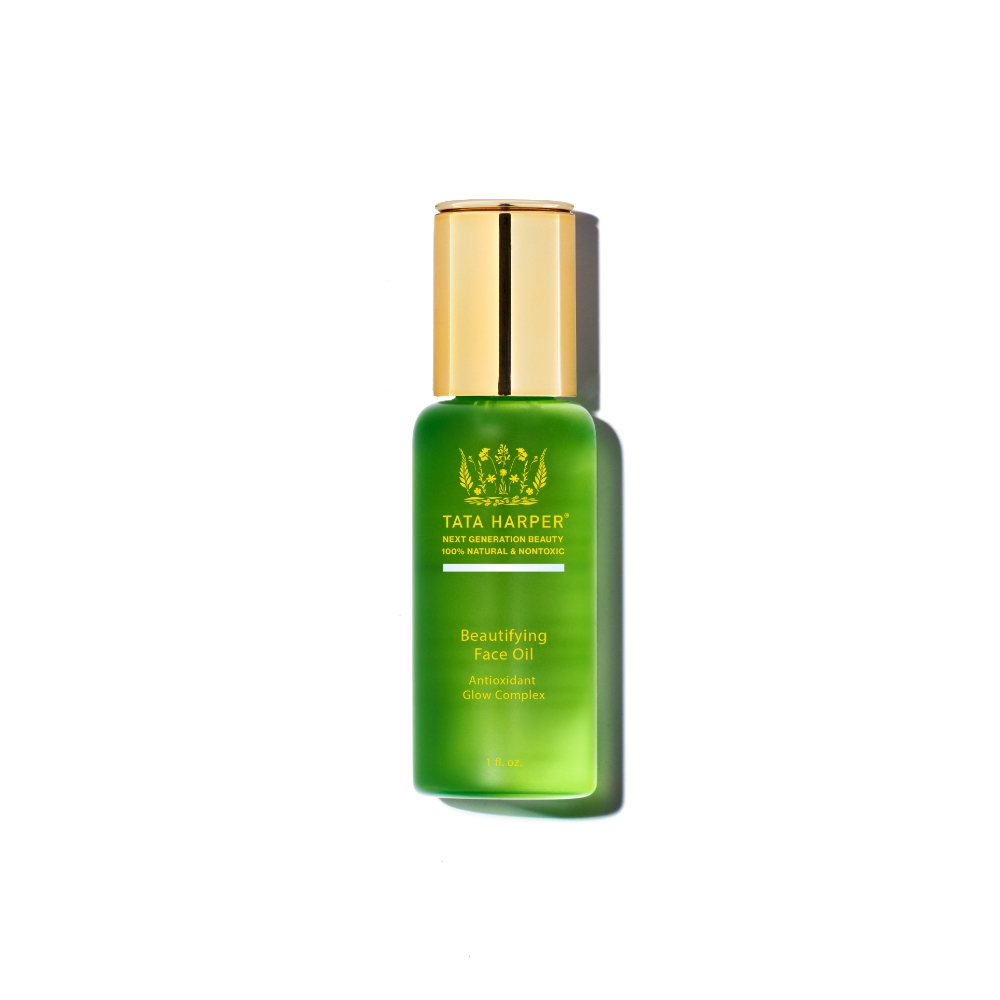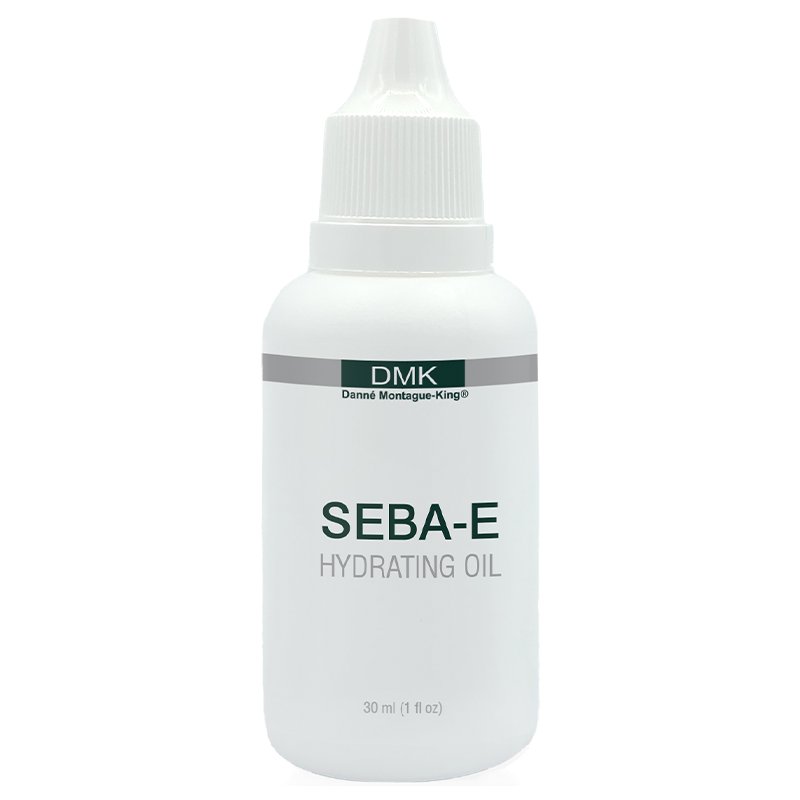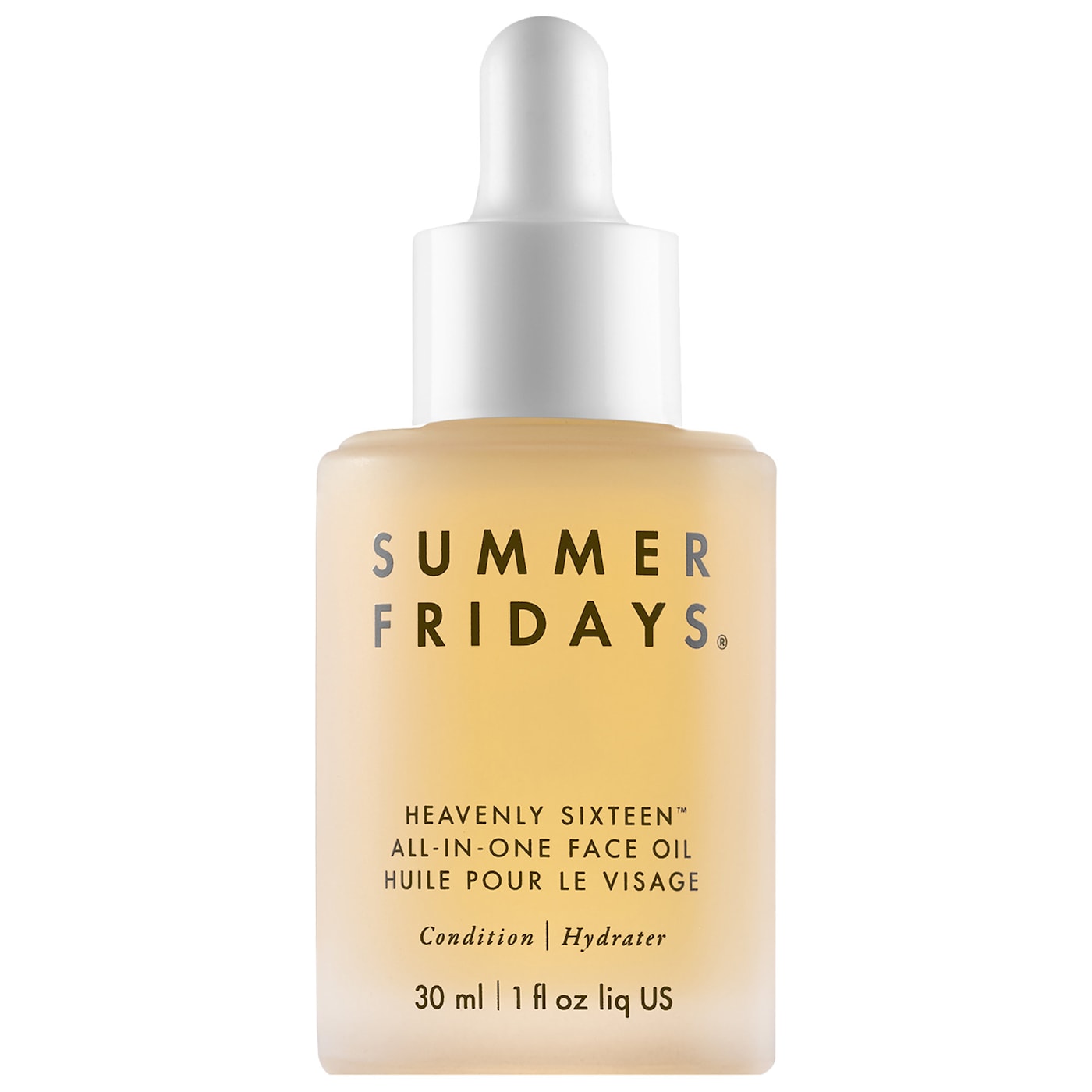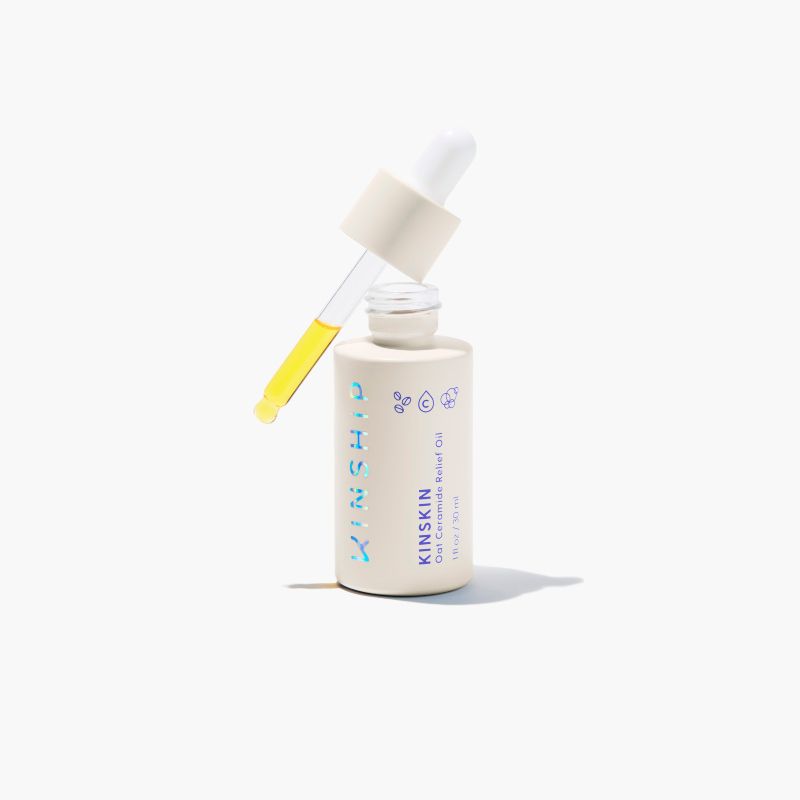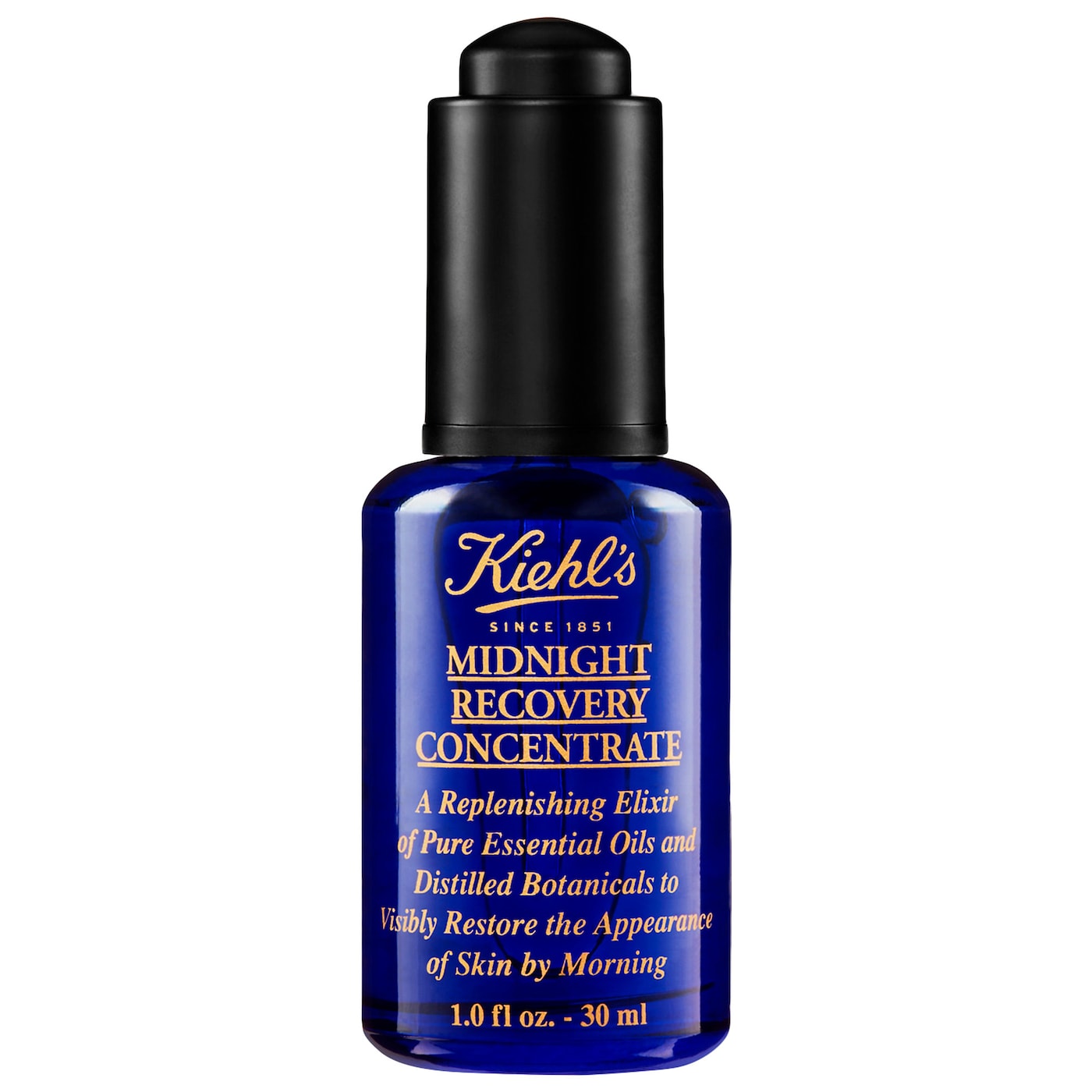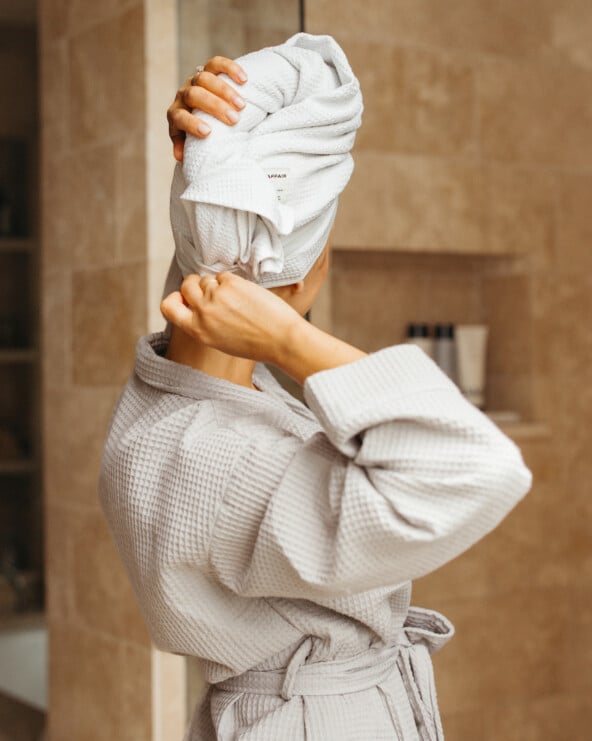Dry skin has an annoying habit of sneaking up on you. One minute, you could have balanced, dewy perfection, only to be followed by a day where your face feels like a tight flaky mess. There are a variety of culprits behind dry skin (more on those later), but the urge to immediately slather on your best heavy moisturizer is a standard impulse. Fair enough! Today, however, we want to make the case for adding face oils into your go-to product lineup when dry skin strikes.
This is not just because “oil” is no longer a dirty word in the skincare stratosphere—although, thank goodness we now know face oils are a complement (or a supplement) to the sebum our sebaceous glands naturally produce. We’re making our case because face oils have the power to supercharge your dry skin routine. Whether pressed on after your moisturizer or mixed in with it, oils help form an occlusive layer that locks in moisture and minimizes water loss. Plus, in addition to keeping you glowing, oils typically smell gorgeous, adding a luxurious aura to your skincare routine.
Fear not, dry skin sufferers. Just grab a scoop of your favorite moisturizer and prepare to find its hardworking counterpart. To help us navigate the rich world of face oils, we tapped dermatological nurse and celebrity aesthetician Natalie Aguilar.
Feature image by Michelle Nash.

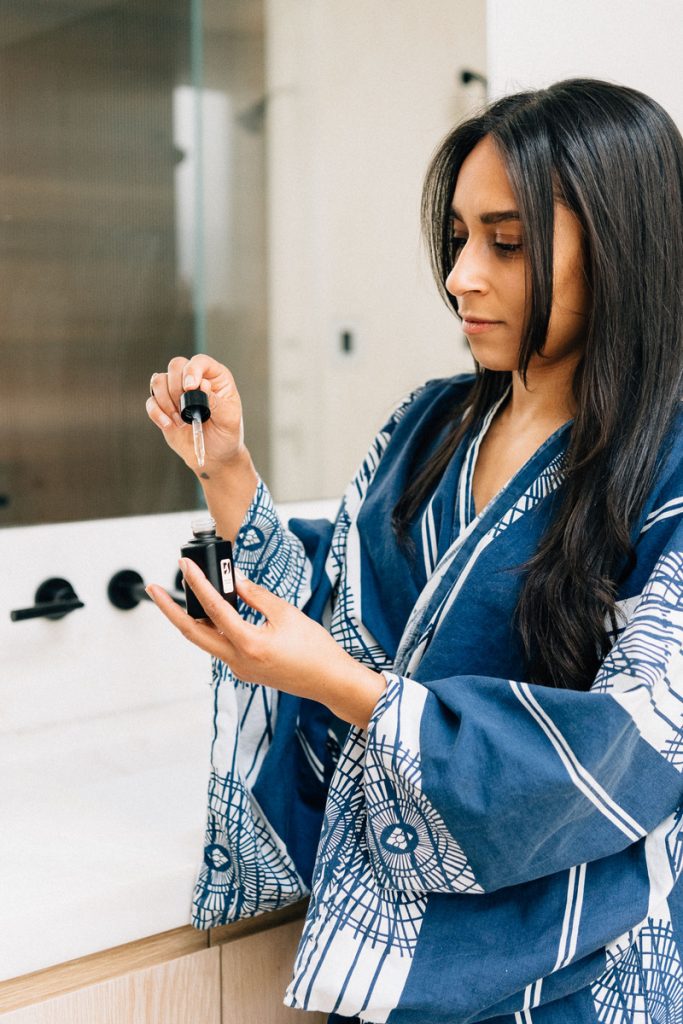
What Might Be Causing Dry Skin?
First things first: Knowing what’s at the root of your discomfort can help you track down the right ingredients for your skin. Aguilar shares some insights into the culprits behind your dry skin days.
The Environment. “Living in cold, windy conditions or low-humidity climates or constantly flying can strip your skin of its natural moisture,” Aguilar explains. “Heaters and air conditioners also reduce humidity—you can almost feel the discomfort of the dry air when you breathe.”
You’re Bathing Too Much. Not to discourage a hygienic routine, but everything in moderation still applies to baths. “Taking long showers or baths with excessively hot water as well as scrubbing your skin too much can dry your skin,” Aguilar says. “Bathing more than once a day can remove the natural oils from your skin as well, so it’s important to moisturize immediately.”
You’re Dehydrated. Thankfully, this is a quick fix. “Not drinking enough water can cause dehydrated skin, making skin feel uncomfortably dry, lackluster, and appear more wrinkled,” Aguilar shares. “To me, there is no point in spending money on expensive skincare if you aren’t hydrating your body with enough water and feeding it nutrient-dense foods.”
You Might Simply Be Prone to Dry Skin. This one is really out of your control, especially for those with a predisposition to certain skin conditions like eczema or psoriasis. Consider this expert-backed dry skin skincare routine to keep things balanced.
Aging. Time is the thief of many things, including our skins’ ability to lock in moisture. “As we age, our skin cells lose the ability to retain water, as does sun-damaged skin,” Aguilar adds.

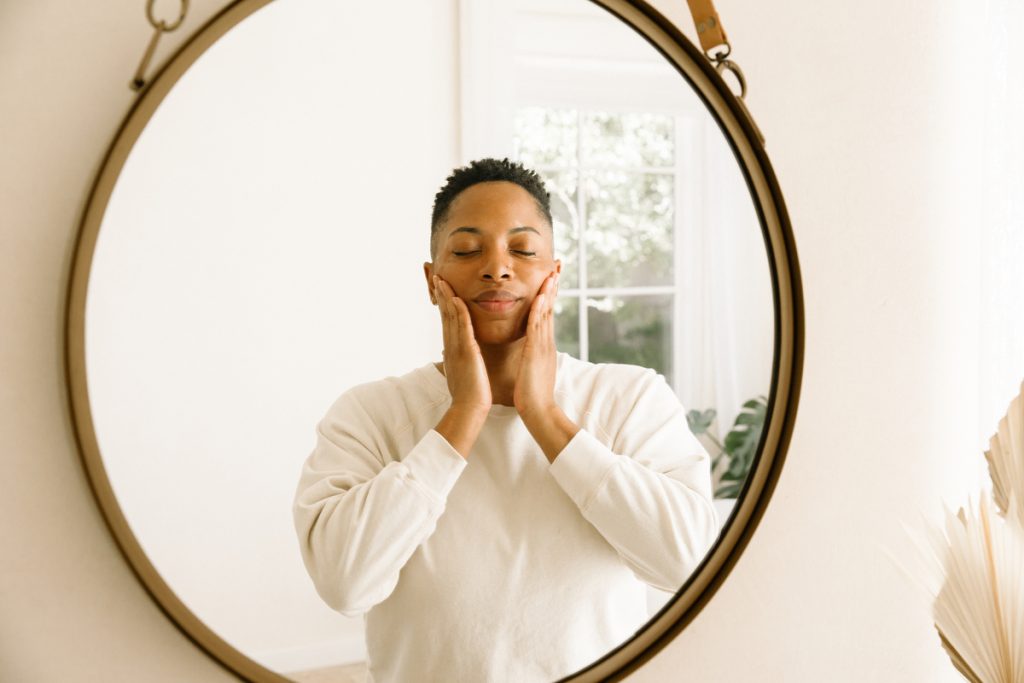
Is There a Difference Between Dry and Dehydrated Skin?
Though they might feel the same, dry and dehydrated skin are entirely different. Dry skin is lacking in oil production and can be a type of skin. Dehydrated skin lacks water. Both are treatable, but dry skin does require a bit more energy and care.
“When you have dry skin, it may be because your sebaceous glands don’t produce enough natural oils, or it may also become dry with age,” Aguilar explains. “As we age, our skin cells lose the ability to retain water, as does sun-damaged skin. Hormone levels also begin to drop, and certain underlying health conditions can also be culprits for dry skin.”
The key to treating dry skin (especially chronically dry skin) is to protect the skin’s barrier with emollients, oils, and creams, according to Aguilar. Drinking plenty of water can help, but it’s not the key.
However, water can have a dramatic effect on dehydrated skin.
“Dehydration can cause our skin to look dull, wrinkled, and tired,” Aguilar says. “It can also feel really itchy. One of the first signs of dehydration is chapped lips. Drinking water and modifying our lifestyle can bring that bouncy glow back into our skin. I always say, ‘You are what you eat and you feel what you drink!’”

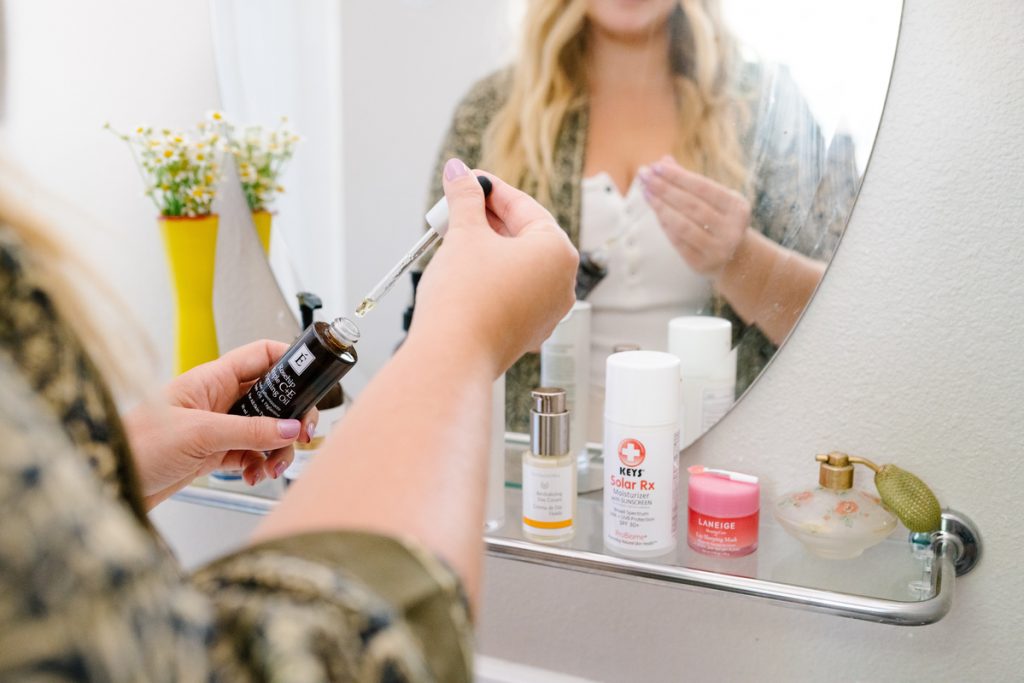
What Ingredients Should You Look For (and Avoid) When Dealing With Dry Skin?
We’re really into (product) labels, especially when we know what we’re looking for on them. Aguilar breaks down some of her favorite moisturizing ingredients found in a face oil near you.
Lipids and Ceramides. “These are natural fats that live in the various layers of the skin,” Aguilar shares. “They promote moisture retention and act as a protective barrier.”
Hyaluronic Acid. “Just like collagen, our bodies produce hyaluronic acid,” Aguilar explains. “It binds water to improve mechanical functions by serving as a natural lubricant. Hyaluronic acid is composed of several sugar molecules that can hold large amounts of water and serve as water reservoirs. With age, hyaluronic acid levels start to deplete, making it an important ingredient to supplement our skin with.”
Natural Oils. “Natural oils like grapeseed oil, olive oil, almond oil, jojoba oil, and others have natural fatty acids,” Aguilar says. “They are amazing because they are made of essentially one to two ingredients. The second ingredient is usually a vitamin E which is also hydrating but is used as a natural preservative. Coconut oil, marula oil, as well as avocado oil are especially useful since they contain higher levels of oleic acid, which makes oils thicker and richer. Oleic acid helps to trap and retain moisture.”
And finally, some ingredients to avoid…
“When dealing with dry skin, it’s best to avoid products that contain fragrance and alcohol,” Aguilar explains. “Fragrances can be an irritant and cause negative reactions on the skin and scalp, and are known to be one of the leading causes of allergic contact dermatitis. Excessive alcohol should also be avoided as alcohol can dry out the skin by stripping natural oils.”

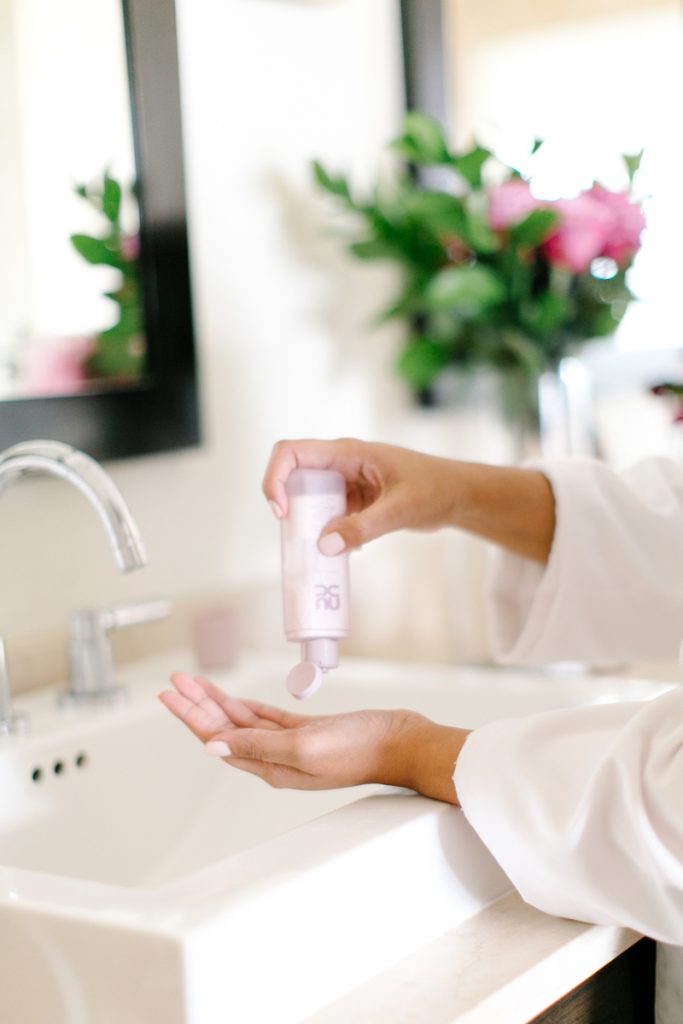
The Best Face Oils for Dry Skin
“This oil is simple yet elegant,” Aguilar shares. “The plums used to make this oil are grown organically and made by the three sisters that own the 100-year-old family farm. This indulgent oil is an excellent source of nourishing vitamins and antioxidants. Powerful polyphenols and omega fatty acids 6 and 9 help protect the skin from damaging free radicals while pro-vitamin A and E help to heal and hydrate skin. It’s lightweight, has an ever-so-light scent of plum, and absorbs nicely.”
Aguilar absolutely recommends plain organic grape seed oil. Packed with antioxidants, the anti-inflammatory doesn’t retain or clog pores, so it’s perfect for facial use.
Virgin Pure Grape Seed Oil for Skin, Hair, and Nails, $19.99
Biossance Squalane + Vitamin C Rose Oil
A trio of squalane, vitamin C, and Damascus rose extract brightens, firms, and hydrates for a dewy, balanced glow.
Vintner’s Daughter Active Botanical Serum
In 2017, there was an absolute frenzy around Vintner’s Daughter, then dubbed “the face oil to end all face oils.” The fervor may have died down a bit, but the magic of that little black bottle and its 22 active ingredients (including grapeseed, rosehip, and avocado) remains.
Drunk Elephant Virgin Marula Luxury Face Oil
Marula seed oil is rich in vitamin E and omegas 6 and 9 fatty acids. The popular product offers youthful balance without any leftover slickness.
Tata Harper Beautifying Face Oil
This antioxidant-rich oil works as beautifully as it looks, and comes equipped with a lineup of botanical ingredients that could rival Vintner’s Daughter.
“This is one of my favorite facial oils,” says Aguilar. “Seba-E is formulated with a very fine blend of my favorite herbal oils such as jasmine oil, oat oil, bitter orange oil, rose oil, and parsley oil which aim to seal in moisture, prevent trans epidermal water loss and decrease inflammation. Seba-E aims to replicate your skin’s natural sebum to retain the water and nutrients necessary for cell life.”
Summer Fridays Heavenly Sixteen All-In-One Face Oil
The concoction of 16 vegan oils is designed to moisturize, plump, and support a strong skin barrier. It offers an instant boost—and has the five-star reviews to back it up.
Kinship Kinskin Oat Ceramide Relief Oil
Featuring oat-based ceramides (one of Aguilar’s favorite moisturizing ingredients) as well as fatty acids and Vitamin C, this pretty vegan oil proves good on its word to offer sweet relief.
Kiehl’s Midnight Recovery Concentrate Moisturizing Face Oil
Packed with primrose oil, lavender, and squalane, the hardworking go-to does its soothing, smoothing magic while you sleep, and more than deserves its cult-favorite status.
Kiehl’s Since 1851 Midnight Recovery Concentrate Moisturizing Face Oil, $52


And Finally, the Age-Old Question…
When should you apply your face oil in your skincare routine?
“The debate of oil before moisturizer is endless,” Aguilar says. “After all, it should be the thinnest product before thickest, right? And while most oils are directed to use before moisturizer and most estheticians will say use it over your moisturizer, I like to remind everyone that face oils happen to be versatile. You can use it before your moisturizer, after your moisturizer, or mix it in with your moisturizer.”


